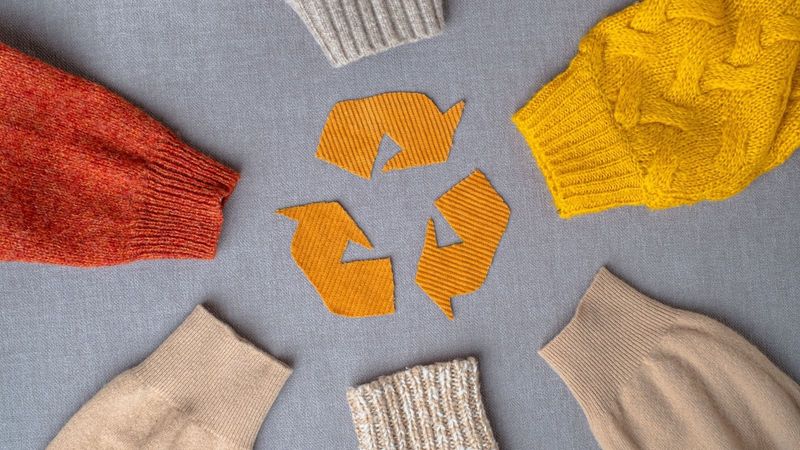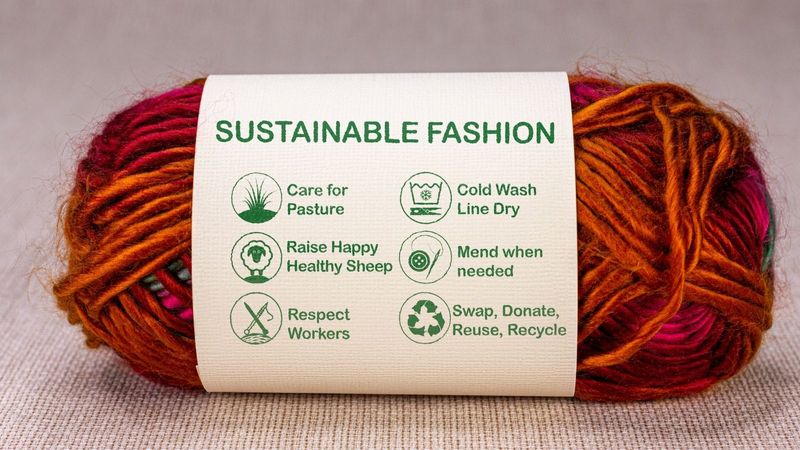We're told that what we wear says a lot about who we are. But we are seldom made to realise the heavy price we pay for keeping up with all the ‘trends’ and ‘looks’. When it comes to fashion, everyone wants to stick to what's trending. Unbeknown to us, this blinding chase to always stay on fleek has us incurring an exorbitant environmental tax!
Not wanting to be caught in the same outfit twice is contributing to global greenhouse gas emissions in more ways than you can imagine! Overall, the fashion industry contributes a whopping 2.1 billion tonnes of greenhouse gas emissions in a single year—equal to four per cent of all global emissions. With the continuous growth of the industry, if we don’t work towards reducing fashion’s impact within the next 10 years, emissions are predicted to rise to 2.7 billion tonnes a year by 2030.

When it comes to carbon offsetting, clothing brands usually only account for carbon emissions in the transport and retail stage. However, it is the dyeing, finishing, yarn preparation, and fibre production stages that are most carbon-intensive. Nevertheless, while offsetting is a wise way to reduce a company's carbon footprint, it can't be the means to buy oneself out of the responsibility to be sustainable. Rather, it should serve as a way to reach one's sustainable goals. That being said, carbon emissions are just the tip of the melting iceberg; fashion companies also contribute to chemical pollution, textile waste, deforestation, microplastics, and water wastage—amongst other concerns.
To put things in perspective for you, manufacturing a single pair of jeans costs us 7,500 litres of water! The world of fashion is clearly producing more supply than demand, while also increasingly building demand. How much is too much when it comes to fashion? And I’m clearly not referring to being overdressed here!

One might think that the massively growing industry would make way for large-scale employment opportunities. But at what cost?
More than just carbon emissions.
In 2011, Zara went on record to claim that it had no idea its clothes were being manufactured under ‘slave-like conditions’. From juveniles working overtime in unfair conditions to grossly underpaid labour sourced from underdeveloped countries—megalomaniac fashion companies go to any lengths to keep up with the rising demands.
When it comes to saving their face from the controversies, most fast-fashion brands opt for greenwashing—a serious concern that takes customers for a ride by creating the impression of being eco-friendly. A recent report by the RSA found that the actual level of recycled content was abysmally low. Across four major online fast fashion brands, the use of recycled fabrics was a mere four per cent. And while recycling plastics where possible has some benefits, it does nothing to address the problem of microfibres—the minuscule bits of fabric that are released when clothes are worn, washed, or disposed of. These microfibres find their way into our bodies and the natural world. Research reveals that clothes release half a million tonnes of microfibres into the ocean every year, equivalent to more than 50 billion plastic bottles. These fibres have been found almost everywhere: from the summit of Mount Everest to the placentas of unborn babies. We still do not know the complete picture of the effects they may have.
So what happens to all the excess produce and leftovers? A 2019 UN report claimed that “every second, an amount of textiles equivalent to a garbage truck is buried or burned." Chile’s Atacama Desert is where fast fashion goes to die, slowly killing the planet in turn. Instead of sand dunes, we're welcomed by the sorry sight of a mound of rejects from the global fast-fashion world. And there are millions of undiscovered and unreported places like the Atacama all across the world! What’s more? From fast-fashion brands like H&M to luxury and athleisure brands like Burberry, Nike, and Urban Outfitters—most fashion giants are known to burn and destroy their unsold merchandise.
We need to remember that the climate impact doesn’t stop at the shop— what happens during a garment’s lifetime and its end-of-life also contributes to environmental degradation. We are buying more clothes than ever before, wearing them fewer times, repairing them less, and throwing them away sooner. While we certainly need to see stringent international legislation that mandates transparency and due diligence to environmental factors, for higher brand accountability across their supply chain—the great news is that you can do your bit too!

Here is how we can help in our own little way that can have a big impact
- Buy less—and ensure the clothes you do buy are made to last
- Trade clothes with friends and family and buy second hand
- Shop consciously. Scrutinise your shopping decisions online. Ask yourself—what are they made of? Is any of the fabric re-used? What’s the lifetime of the product?
- Take care of your things: smell them—must they be washed after every single use? Don’t wash on high heat and air-dry instead of dry clean.
- Mend your clothes, sell them, swap with people online!
The future of our planet is in all our hands and it’s about time we all hold ourselves accountable for our actions!





